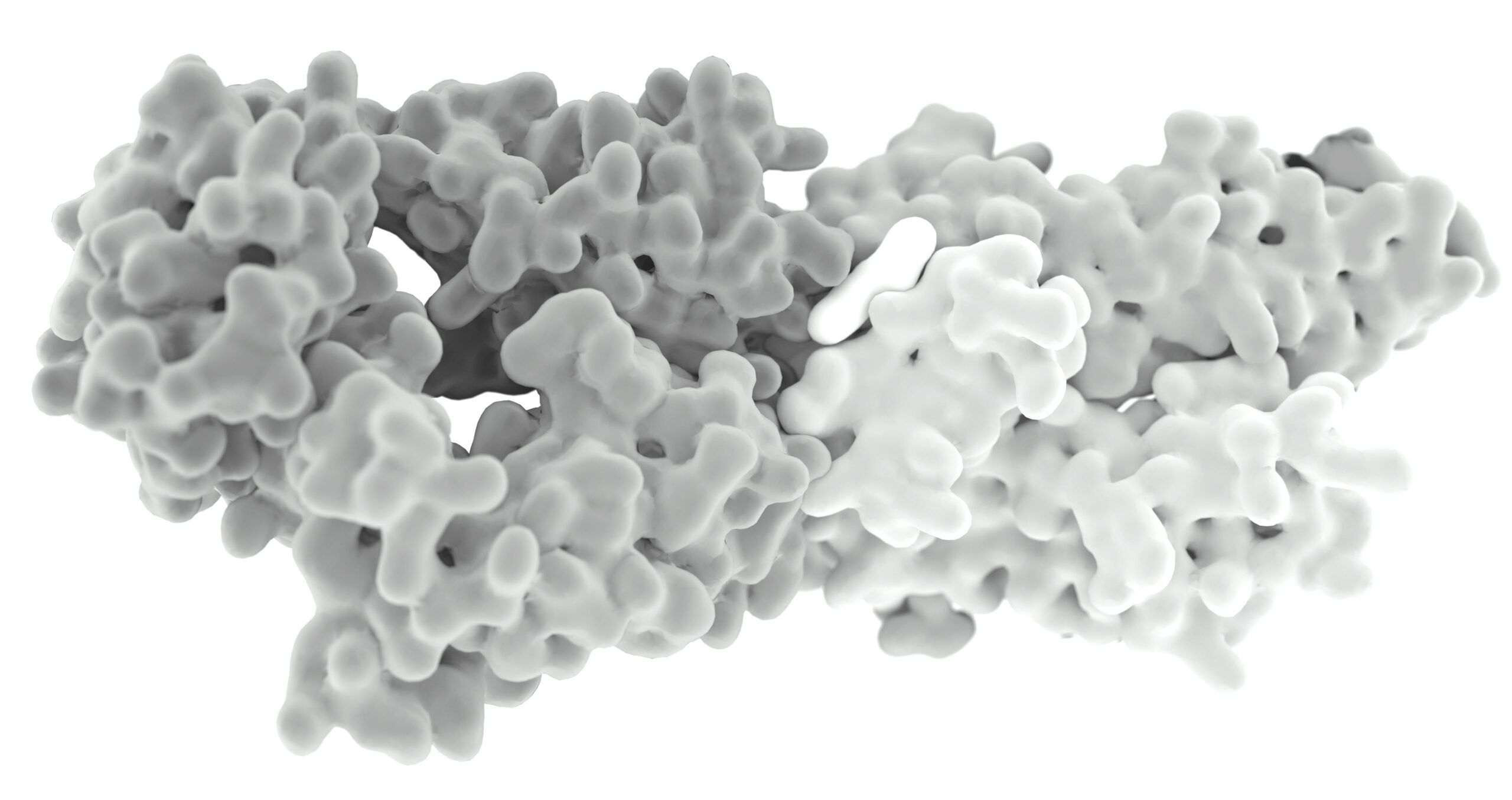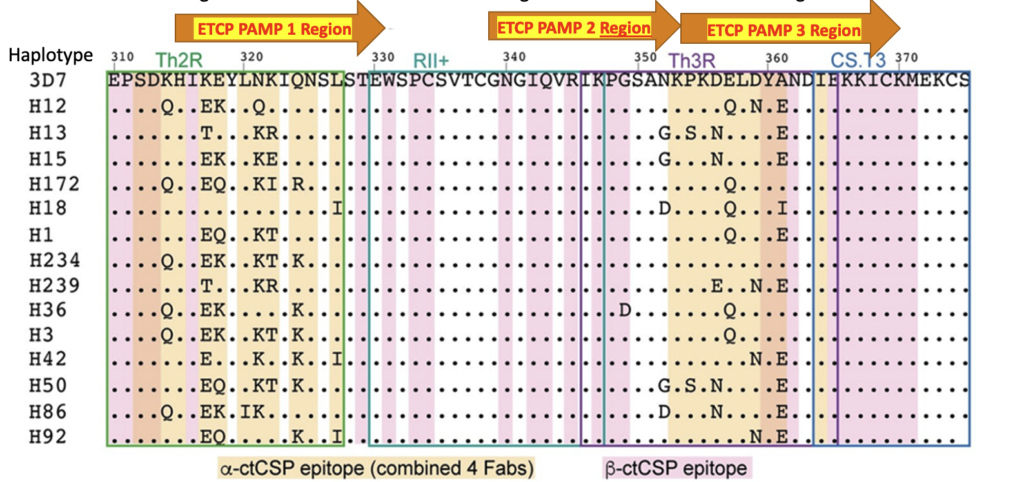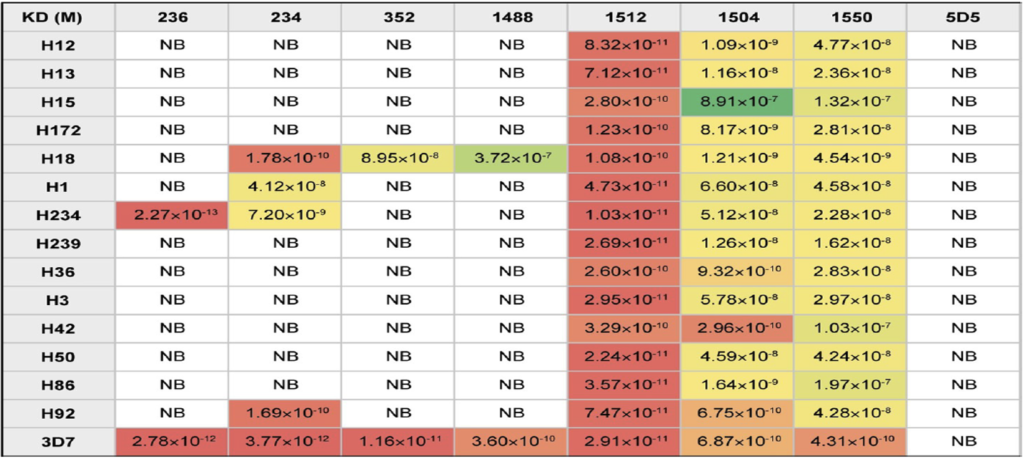
Why the Central Repeat Region of CSP is the Wrong Target!

Central Repeat Region is conserved because it works for the parasite to evade a strong immune response
It will not generate a Th1 response!

Literature Case study: Role of PAMPs in Malaria
➢ The Malaria parasite over time has mutated/evolved to eliminate many ETCP PAMP structures and thereby evade the immune system with new strains.
➢ Malarial strains have highly conserved central repeat regions which are poor at generating Th1 responses.
➢ IPC bioinformatics identified the ETCP PAMP structures in each haplotype of the P. falciparum strain and then compared the immunogenicity of each mutation to show that one specific mutation will “Turn off” the ETCP PAMP as reported.
Beutler N, Pholcharee T, Oyen D, Flores Garcia Y, MacGill RS, Garcia E, et. al.,
“A novel CSP C–terminal epitope targeted by an antibody with protective activity against Plasmodium falciparum.” PLoS Pathog 2022, 18(3)

Malaria Test Case for C-Terminus Peptides of the Circumsporozoite Protein (CSP)
Analysis applied to the whole peptide fragment for each haplotype and only 2 regions were identified as having ETCP PAMPs:
PAMP 1 Region AAs – 314-332 PAMP 2 Region AAs – 339-353 PAMP 3 Region AA 354 -370

Beutler N, Pholcharee T, Oyen D, Flores Garcia Y, MacGill RS, Garcia E, et. al.,
“A novel CSP C-terminal epitope targeted by an antibody with protective activity against Plasmodium falciparum.” PLoS Pathog 2022, 18(3)

Analysis of the C-Terminus Region of the P. falciparum region
➢3 ETCP PAMP regions clearly identified in the C-Terminus portion of the P. falciparum parasite.
➢The ETCP PAMP 1 Region precedes the known Liver binding (LB) region of the CSP & the ETCP PAMP Region 3 overlaps a known cytotoxic T-Cell (CTL) binding epitope region.
➢The ETCP PAMP 2 links the LB & CTL epitopes and is highly conserved across all haplotypes – a prime ETCP PAMP for use in a P. falciparum vaccine construct.

➢ETCP PAMPs identified correspond exactly to the active mAb regions reported*.
➢Only one ETCP PAMP was identified in the N-Terminus portion of the CSP & none in the central repeat region (CRR).

* Figure 3B: Dissociation constant (KD) of all mAbs was measured against all generated ctCSP peptides with the strongest to weakest affinities represented as a gradient from red to yellow and green, respectively. Boxes labeled with NB (no binding) represent haplotypes that had binding responses less than the negative control (mAb 5D5 – PfCSP N-terminus antibody).


